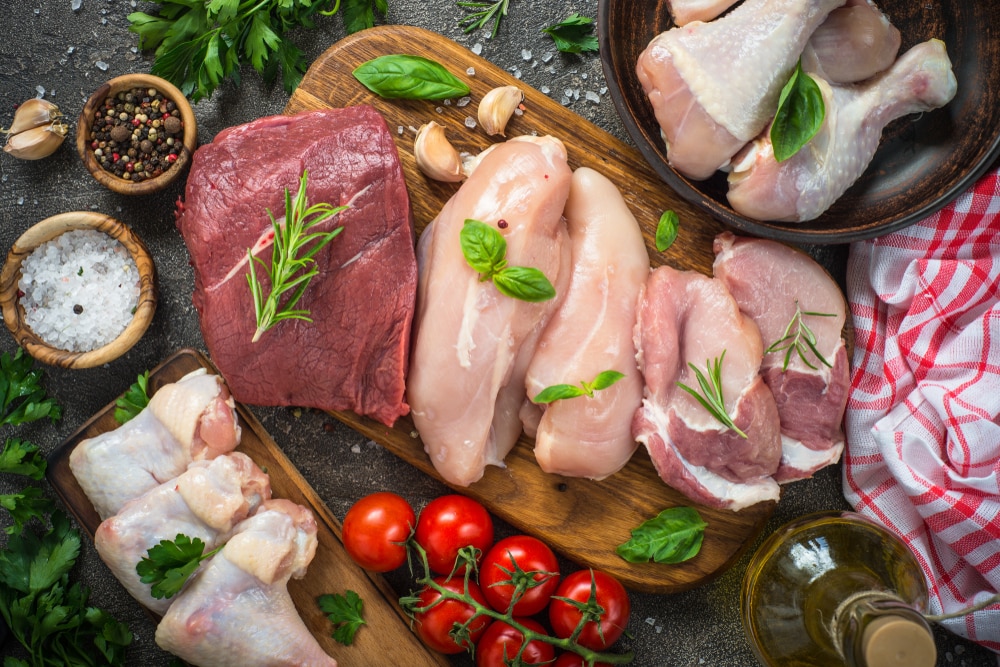The culinary world is full of heated debates. Is a hotdog a sandwich? Should chili have beans or no beans? But one of the biggest questions that home cooks wrestle with is what cooks faster – chicken or beef? With so many factors involved, it can be tricky to definitively settle this meaty matter. In this in-depth exploration we’ll examine the key elements that impact cooking times for chicken and beef. After evaluating the evidence, hopefully we can finally resolve this simmering kitchen quarrel once and for all.
Composition Matters
The fundamental composition and structure of chicken versus beef plays a significant role in cooking speed. Chicken is made up of lean protein with very little fat or connective tissue. The lack of collagen means it can dry out and overcook quickly if not carefully monitored. Beef, on the other hand, often contains marbled fat and connective tissues that require longer cooking times to properly tenderize and develop flavor. This basic biological difference gives chicken an advantage when it comes to cooking speed.
Density Makes a Difference
The density and water content of meats also impacts cooking time. Chicken is lower in density than beef, with a higher water composition. This allows heat to penetrate chicken more rapidly, enabling it to cook faster. Beef’s denser muscle structure means it requires more time for the interior to reach optimal doneness, especially for thicker cuts. So in a density battle, chicken emerges as the speedier option.
Mass Matters
Sheer mass and dimensions play a role too. A larger cut of meat naturally takes longer to cook than a petite piece. So while chicken may cook faster pound for pound, a massive beef roast still needs extended time to cook through compared to boneless chicken breasts. The thickness of the meat matters as well, with thinner cuts cooking more swiftly.
Preparation Power
Preparation techniques can significantly affect cooking times Spatchcocking chicken by removing the backbone allows it cook faster and more evenly Tenderizing beef with acids like lemon juice or powdered meat tenderizer helps break down fibers. Marinating beef in an acidic mixture for hours before cooking also softens tissue. Proper preparation gives each meat an advantage.
Cooking Method Counts
The selected cooking technique also influences the cooking duration. High heat methods like grilling or broiling speed cooking for thinner cuts of chicken and beef. Slow braising is better for larger, tougher beef cuts. Deep frying chicken cooks it rapidly from all sides. Pressure cooking beef brisket reduces cook times drastically. So cooking method choices can tip the scales.
Temperature Goals
The target safe internal temperature impacts total cook times. Chicken should reach 165°F to eliminate bacteria. Beef can be enjoyed at temperatures from rare (125°F) to well done (170°F+). A lower required temp means beef may hit its mark faster, depending on personal preference. Monitoring meat with a thermometer avoids overcooking.
The Secret Weapon: Spatchcocking
Spatchcocking chicken is the secret weapon that gives it a clear speed advantage over beef Removing the backbone and flattening the bird allows for quick, even cooking. Exposing all areas equally to the heat source reduces cooking time substantially compared to roasting a whole chicken. It’s a game changing technique.
The Verdict
When all the evidence is thoroughly reviewed, chicken emerges as the faster cooking meat compared to beef. Its lean composition, density, and ability to be spatchcocked for rapid cooking gives chicken the winning edge. However, proper technique and temperatures are still crucial for both meats. Understand the factors at play, choose your weapon wisely, and you can declare a victor in the battle of chicken versus beef. Now onward to settle the great hot dog sandwich dispute!

Which Cooks Faster, Chicken Or Steak?
- Fry the chicken and steak.
- On medium heat, turn each piece the same number of times.
- Meat must rest and measure internal temperature.
- The internal temperature of the steak must be at least 110 degrees to kill germs and make it safe to eat.
- The internal temperature of chicken must be at least 165 degrees to kill germs and make it safe to eat.
